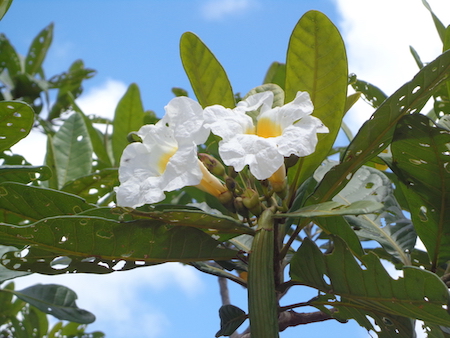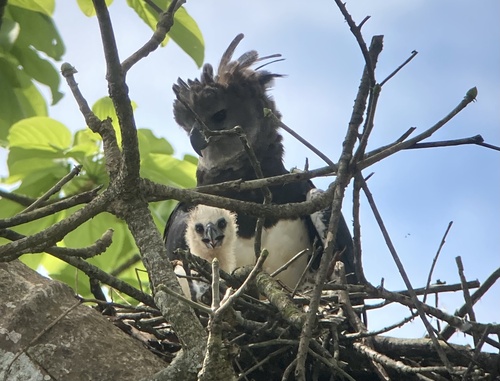Press release CITES CoP19 n°2
Panama
Ipê. Latin America and the Caribbean including French Guiana
The proposal by Colombia, Panama and the European Union to list ipês in Appendix II (regulation of international trade) was adopted by 86 votes in favour, with 17 against and 18 abstentions. Appendix II will not eliminate the harvesting of ipês. Their marketing will be subject to annoying administrative checks for forest operators and buyers. The smugglers’ activities will also be more complicated. Brazil prepared a similar proposal 3 years ago for the 18th CITES plenary session. It was withdrawn at the last moment when Jair Bolsonaro became the Brazilian president. Newly elected, Lula da Silva will only be in office from January 1, 2023 and the “former regime” Brazilian delegation opposed this proposal. Together with Bolivia, they succeeded in obtaining a 24-month delay before the entry into force of the inclusion. Looters will have time to cut left, right and center and build up stocks. The United Kingdom highlighted this risk. Nevertheless, the inclusion of ipês in Appendix II is very good news. The United States, a major importer, voted against it.
The name “ipê” covers 113 species of trees in the genera Handroanthus, Roseodendron and Tabebuia, also known as green ebony or trumpet trees after their flowers. Exports from the Brazilian Amazon increased by 500% between 1998 and 2004. France has played a leading role in the boom in the looting of the dense tropical forests of Central and Latin America by promoting ipê in planks through prestigious constructions such as the esplanade of the French National Library or the benches on the Champs-Elysées, for which Robin des Bois was sued by the Paris City Hall in 1995 after their neat stencil stamping with the label “Property of the Indians”. One of the methods for selling timber looted from indigenous territories and protected areas on the international market is to inflate inventories prior to opening a legal forest concession and to use the false surplus to launder trees that were cut down elsewhere illegally. Fake traceability and forged official documents are the pillars of the looting. The seizure by the Brazilian authorities in northern Mato Grosso in 2016 of 350 m3 of ipê (18 trucks) was destined for Belgium, the United States and France. One m3 of ipe planks sells for between 2,000 and 3,000 €.
Ipê trees are an essential habitat for nesting birds such as macaws. They are a source of pollen and nectar for bees, butterflies, hummingbirds. Howler monkeys, brocket deer and blue-crowned trogons feed on their flowers during the dry season.
See “Robin des Bois contre la Mairie de Paris (Robin des Bois vs. Paris City Hall)”, Jan. 30, 1995
https://robindesbois.org/robin-des-bois-contre-la-mairie-de-paris/ (only in French)
The original proposal by Colombia, Panama and the European Union was to list the entire genus Dipteryx in Appendix II. The genus Dipteryx occurs in Central and South America. Its dense, hard wood is used for indoor and outdoor floors (1,150 €/m3). Its seeds, marketed as tonka beans, are used in food and perfumery for their aromas and fragrances associated with vanilla, patchouli, sandalwood or musk. They contain high concentrations of coumarin, which is toxic to the liver in large quantities and is therefore prohibited as a food additive in the United States and the European Union. The harvesting of the seeds is detrimental to the recovery of wild populations. The original proposal pointed out that this seed diversion combined with tree harvesting and contributed to the medium-term extinction of the cumaru. Confronted with opposition from Brazil, Suriname, Bolivia, Peru and Guyana, the proponents had to back off. The cumaru is now included in Appendix II with the exclusion of its seeds and with a 24-month delay of entry into force. The amended proposal got 74 votes in favour, 13 against and 18 abstentions. Some species reach reproductive maturity and start bearing fruit at 170 years. The trunk cavities of Dipteryx micrantha are nesting sites for many threatened species such as the great green macaw, the scarlet macaw and the red-and-green macaw. The harpy eagle nests on its tops. It is subject to poaching. Bats, parrots, agoutis, peccaries, deer, tapirs, hummingbirds and bees feed on their fruits, seeds and flowers.
Doussie or African mahogany (Afzelia africana, A. bipindensis, A. pachyloba and A. quanzensis). Africa
The proposal by Benin, Botswana, Liberia, Malawi, Senegal and the European Union to list 4 species of doussie in Appendix II was accepted by 95 votes in favour, 12 against including Central African Republic, Cameroon, Congo and Gabon, and 17 abstentions.
Doussies live from sub-Saharan Africa to Mozambique. They improve soil fertility by fixing nitrogen. Their seeds are eaten by birds, monkeys and squirrels, their leaves are eaten by common duikers and elephants. In Africa, doussies are used in traditional medicine, cooking, soap making, for livestock fodder (leaves and branches) and as lumber and firewood. In Burkina Faso, some ethnic groups consider them sacred. Overharvesting is driven by the international market. Doussies are exported to the United States, the European Union and China for building, luxury shipbuilding, decorative veneers and furnishing. The United States voted against the proposal, China abstained. Few species epitomise to that extent the plundering of Africa’s natural resources. In the words of the proposal, “for every Afzelia africana tree harvested in Uganda in 2018, landowners earned 2.5 to 15 US$, although the logs were worth 50,000 US$ when they reached China.” Illegal logging in Uganda to supply the Chinese market is described as “endemic”.
Padauk (Pterocarpus spp.). Africa
Two species of padauk (Pterocarpus erinaceus and P. tinctorius) are already listed in CITES Appendix II since 2017 and 2019. Côte d’Ivoire, Liberia, Malawi, Senegal and the European Union requested this year the listing of the entire genus Pterocarpus, i.e. 12 species present in 34 countries in Western, Eastern and Central Africa. They are marketed as padauk, teak or rosewood. From “hongmu”, China produces furniture non-stop. For colobuses and chimpanzees, padauk leaves are a delicious meal. The Republic of the Congo and Cameroon were opposed but their isolation led them not to oppose the approval of the proposal by consensus.
African mahogany (Khaya spp.). West and Central Africa
The proposal by Benin, Gambia, Liberia, Madagascar, Malawi, Senegal and the European Union to list all 6 species of the genus Khaya in Appendix II was approved by consensus. Here again, Cameroon has made concessions. African mahogany is mainly exported from Gabon, Cameroon, Congo, Côte d’Ivoire and the Democratic Republic of the Congo, again to China, the United States of America and the European Union.
All other Robin des Bois’ press releases on this CITES in Panama:
“An arrk and 9 tuned notes”, (CITES CoP19 n°5), November 25, 2022
“CITES : 11 ups and one down” (CITES CoP19 n°5), November 23, 2022
“The ups and downs of CITES” (CITES CoP19 n°4), November 21, 2022
“Good news for macaques” (CoP19 n°3), November 18, 2022
“Good day for trees”, (CITES CoP19 n°2), November 18, 2022
“Panama, the great sellout of wild animals and plants” (CITES CoP19 n°1), November 14, 2022
 Imprimer cet article
Imprimer cet article










